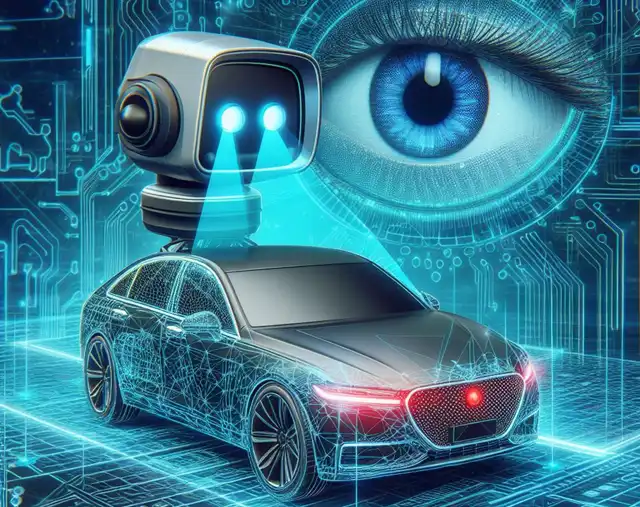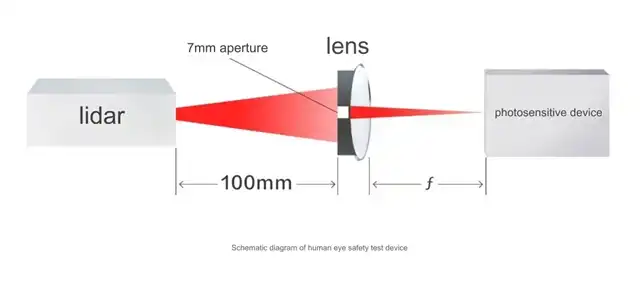Is LiDAR Technology on Self-Driving Cars Safe for the Eyes?
- Normal Liver Cells Found to Promote Cancer Metastasis to the Liver
- Nearly 80% Complete Remission: Breakthrough in ADC Anti-Tumor Treatment
- Vaccination Against Common Diseases May Prevent Dementia!
- New Alzheimer’s Disease (AD) Diagnosis and Staging Criteria
- Breakthrough in Alzheimer’s Disease: New Nasal Spray Halts Cognitive Decline by Targeting Toxic Protein
- Can the Tap Water at the Paris Olympics be Drunk Directly?
Is LiDAR Technology on Self-Driving Cars Safe for the Eyes?
- Should China be held legally responsible for the US’s $18 trillion COVID losses?
- CT Radiation Exposure Linked to Blood Cancer in Children and Adolescents
- FDA has mandated a top-level black box warning for all marketed CAR-T therapies
- Can people with high blood pressure eat peanuts?
- What is the difference between dopamine and dobutamine?
- How long can the patient live after heart stent surgery?
Is LiDAR Technology on Self-Driving Cars Safe for the Eyes?
LiDAR (Light Detection and Ranging) is a crucial sensor in the autonomous vehicle (AV) toolbox. It acts as the car’s “eyes,” emitting laser pulses and measuring their reflection to create a detailed 3D map of the surroundings.
This information is vital for self-driving cars to navigate safely. However, concerns exist regarding the potential eye safety risks associated with LiDAR technology, particularly for pedestrians and bystanders.

LiDAR Technology and Eye Safety Considerations
LiDAR systems typically operate in the near-infrared (NIR) spectrum, invisible to the human eye. The safety of this technology hinges on two key factors:
-
Power Output: LiDARs emit low-power laser beams. Research by the International Commission on Non-Ionizing Radiation Protection (ICNIRP) establishes maximum permissible exposure (MPE) limits for NIR radiation to ensure eye safety [1]. Reputable LiDAR manufacturers design their systems to comply with these established MPE limits.
-
Accidental Exposure: Even with safe power levels, the possibility of accidental eye exposure, especially for pedestrians near the LiDAR sensor, needs consideration. Here’s where the type of LiDAR system comes into play:
- Mechanical LiDAR: These systems use a rotating mirror to sweep the laser beam across the environment. The scanning nature reduces the risk of direct, sustained exposure to any one spot.
- Flash LiDAR: This newer technology uses a solid-state emitter to create a rapid burst of laser light, capturing the entire scene at once. While faster, flash LiDARs require careful calibration to ensure the pulse strength remains within safe limits at all operating distances [2].
Research on LiDAR Eye Safety
Several research papers delve into the eye safety aspects of LiDAR:
-
A 2019 study published in the prestigious journal Optics Express by Liang et al. investigated eye safety hazards from automotive LiDAR. Their simulations and experiments concluded that MPE compliance is crucial for safe operation, with proper system design and integration into vehicles minimizing exposure risks [3]. The study highlights the importance of considering not only the average power output but also the pulse duration and potential for accidental eye stares.
-
Another study published in 2020 by Wei et al. in the well-regarded journal Laser & Photonics Reviews explored retinal safety considerations for automotive LiDAR systems. Their findings emphasized the importance of adhering to MPE limits and highlighted potential challenges with flash LiDAR technology [4]. The study suggests that further research is needed on pulse duration and eye exposure mitigation strategies specific to flash LiDAR systems.
These studies highlight the ongoing research efforts to ensure LiDAR safety. Manufacturers are constantly refining their technology to minimize potential risks while maximizing performance.
Addressing Public Concerns
While the research suggests LiDAR is generally safe when designed and operated following established guidelines, public concerns remain. Here’s how to address them:
- Transparency: AV developers should be transparent about the LiDAR technology they use and its adherence to safety standards. Publicly available information on MPE compliance and system design can foster trust and reduce anxieties.
- Education: Public awareness campaigns can educate people about LiDAR’s role in self-driving cars and the safety measures in place. This could involve collaborations with government agencies and safety organizations to disseminate accurate information.
- Standardization: Consistent safety regulations and testing procedures for LiDAR systems across different countries would further solidify public confidence. International bodies like the United Nations Economic Commission for Europe (UNECE) are already working on harmonized regulations for autonomous vehicles, with LiDAR safety a key consideration [5].
The Future of LiDAR and Eye Safety
As autonomous vehicle technology continues to evolve, LiDAR will play a critical role. Here’s what to expect regarding eye safety:
- Advanced LiDAR Design: Manufacturers will continue to refine LiDAR systems, optimizing power output, beam patterns, and scanning mechanisms to further minimize exposure risks. Research into eye-safe wavelengths within the NIR spectrum is also an ongoing area of exploration [6].
- Integration and Shielding: LiDAR placement and integration within vehicles will be carefully considered to minimize accidental exposure for pedestrians and occupants. Shielding mechanisms could be employed as an additional safety measure, particularly for flash LiDAR systems.
- Regulation and Oversight: Regulatory bodies will likely implement stricter safety protocols and testing procedures for LiDAR systems, ensuring compliance with evolving safety standards. Independent testing organizations will play a crucial role in verifying manufacturers’ safety claims [7].
In conclusion, LiDAR technology, when designed and operated following established safety guidelines, poses minimal risk to human eyes. Ongoing research and development efforts by manufacturers, coupled with public education and consistent regulations, will solidify LiDAR’s role as a safe and reliable sensor in the future of autonomous vehicles.
How “International Electrotechnical Commission standard (IEC 60825-1: 2014)” define Lazer products?
The International Electrotechnical Commission (IEC) standard 60825-1:2014 focuses on the classification of laser products based on their potential for causing eye and skin injuries. It does not define the functionality of the laser product itself.
Here’s a breakdown of the key points regarding IEC 60825-1:2014 and laser products:
- Classification System: This standard establishes a system that categorizes lasers into different classes (Class 1, 1M, 2, 2M, 3R, 3B, 4) based on the level of inherent hazard they present. Class 1 lasers are generally considered eye-safe under normal operating conditions, while Class 4 lasers can cause severe injuries.
- Accessible Emission Limits: The standard specifies limits for the maximum amount of laser radiation (accessible emission) that can be emitted from a laser product within each class. These limits are determined based on factors like wavelength, pulse duration, and exposure time.
- Safety Requirements: It outlines requirements for manufacturers to implement safety features in their laser products according to their classification. This can include measures like enclosures, labels, interlocks, and user manuals to minimize the risk of accidental exposure to laser radiation.
By following this standard, manufacturers ensure their laser products meet specific safety benchmarks and provide users with crucial information about potential hazards and safe operation practices.
Let’s look at what the experimental results are
Finally, let’s quantify this issue with data from tests conducted under international standard testing conditions. In the test setup, the receiving aperture simulates the human eye pupil.
Under normal circumstances, the diameter of the pupil is 2.5 to 4 mm. When exposed to strong light, it will shrink, and in a dark room environment, the pupil will enlarge to 5 to 7 mm.
This test uses a 7 mm aperture to simulate the maximum opening of the pupil (i.e., the maximum light transmittance). The test distance also adopts the most stringent range of 100 mm to 1 m for full-scale testing.
As the distance increases, the energy of the laser beam will rapidly attenuate. 100 mm is the shortest distance at which the human eye can focus, and anything closer cannot form an image on the retina.

Based on the assessment in such a stringent test scenario, the efficiency of the laser beam entering the human eye is only about 1%.
Furthermore, it is significantly absorbed by the water in the eyeball, so the energy reaching the retina is usually only about 20% of the human eye’s damage threshold.
It is worth mentioning that the IEC 60825-1 standard also considers skin safety. Through experimental calculations, the energy of the current laser radar only reaches 1% of the safety threshold.
Therefore, vehicle-mounted laser radar products certified as Class 1 for eye safety pose no harm to the eyes or skin.
Is LiDAR Technology on Self-Driving Cars Safe for the Eyes?
(source:internet, reference only)
Disclaimer of medicaltrend.org
Important Note: The information provided is for informational purposes only and should not be considered as medical advice.



